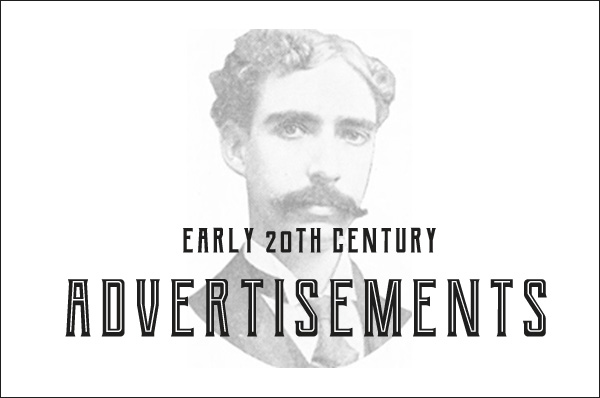 |
 |
 |
||||||||||||||||||||||||
It's 1905. There are a few more things to sell, especially if you're in the home-improvement trade. These are all from House and Garden Magazine, which concerned itself with upper middle-class needs. What are the chances these companies are still around? We'll see. First up:
W. H. Glenny made silverware in Buffalo in 1876; apparently they branched out. If you own one of these, the laundrress will ave no excuse for not ironing your clothes exactly as you wish them. Beat them! She's probably Irish! At least we've learned that children wore halos when Mom was feeling special.
Muckenhirn's Naturo, the Earth Shoe of crappers:
For an era obessed with digestion and elimination, this must have been all the rage for a while - but who could talk about it? If you complimented someone on their complexion or high spirits, they wouldn't say "thank you! I'm voiding my bowels by sitting at an angle now."
There were plural Bergers:
John and Wilson. The company was absorbed, but its descendent is proud of its Berger lineage. An old New York ghost sign can be seen here; can't find its location today. There were a lot of companies that made sectional cabinets, and it makes you wonder what enormous complexes of drawers were constructed over the years.
I will not accept a substitute, sirrah! What sort of knave do you take me forth? Bring forward the Pantasote post-haste and I'll have no more of your insolence:
You can't tell the difference between Pantasote and real leather, says the smallest possible print. Meaning, it's fake. But what was it? This:
Ah. It lasted long enough to be sued in 2002 for toxic-chemical exposure. Well, you can't make Pantasote without breaking some eggs. And altering the DNA of several generations of chickens.
This isn't the actual tag! It's a facsimile! Do not believe that this is the sole tag. It is but a copy.
Yes, they were famed for wicker, which was comfy in the summer. (The lady on the right is wearing her July beachwear.) It let the air go through and cool those parts of you not covered with wool. Note: you were completely covered with wool. Heywood-Wakefield is still around, as a nameplate.
The invention of the tiling was one thing, but when they got it to interlock, fortunes were made.
Nice floors didn't help the National Bank of North America, whcih went belly up in 1908. A reminder of the good old days:
Belting and Packing is gone, but the factory remains - and has historic status.
The height of luxury and technological advances, even though it's the size of an entire room:
As the copy warns you: Clothes will turn the color of urine and they will smell if you use other products.
Of course he's remembered: Today, the reputation of Herbert Caleb Chivers is derived almost entirely from one commission: his 1903 Women's Magazine Building extravaganza built for the first Mayor of University City, Edward Gardner Lewis. In continuing service as that city's City Hall since 1930, the building is still remarkably intact. His designs? Available on Amazon. Or here - for free. |
||||||||||||||||||||||||||
 |









